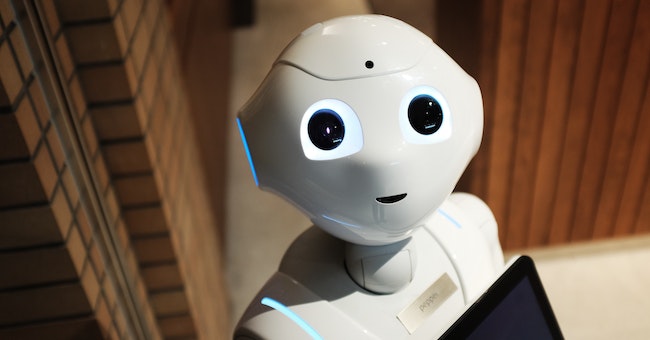A Closer Look at Autonomous Robots

What are Autonomous Robots?
Autonomous robots are advanced machines capable of performing tasks and making decisions without human intervention. Equipped with sensors, artificial intelligence, and sophisticated algorithms, these robots can perceive their environment, analyze data, and adapt their actions to achieve their objectives. They operate independently, often in complex and dynamic environments, and can be utilized in various industries, including manufacturing, logistics, healthcare, agriculture, and exploration, among others. Autonomous robots play a crucial role in streamlining processes, enhancing efficiency, and reducing human involvement in repetitive or hazardous tasks.
What is the difference between a robot and an autonomous robot?
The main difference between a robot and an autonomous robot lies in their ability to operate and make decisions without human intervention.
Robot:
A robot is a machine designed to carry out specific tasks or functions. It can be programmed to follow a predefined set of instructions or be remotely controlled by a human operator. Robots can be used in various industries and applications, such as manufacturing, assembly lines, surgery, and household chores. However, they typically require continuous human guidance or preprogrammed commands to execute their tasks effectively.
Autonomous Robot:
An autonomous robot, on the other hand, has the ability to operate and make decisions without direct human control. These robots are equipped with advanced sensors, artificial intelligence, and sophisticated algorithms that enable them to perceive their environment, process information, and adapt their actions accordingly. Autonomous robots can analyze data in real-time, navigate complex environments, and respond to changing circumstances without human intervention. They can perform tasks independently, even in dynamic and unpredictable situations.
What are Autonomous Robots Used for?
Autonomous robots have a wide range of applications across various industries due to their ability to operate independently and make decisions based on real-time data. Some of the common uses of autonomous robots include:
Manufacturing and Assembly: Autonomous robots are employed in manufacturing and assembly lines to carry out repetitive tasks with precision and efficiency. They can handle tasks such as welding, painting, quality inspection, and material handling.
Logistics and Warehousing: In warehouses and distribution centers, autonomous robots can navigate and transport goods, optimizing the movement of inventory and improving efficiency in the supply chain.
Agriculture: Autonomous robots are utilized in precision farming to monitor crops, apply fertilizers and pesticides, and perform other agricultural tasks. They can analyze crop health and make data-driven decisions to optimize yield and reduce resource usage.
Exploration: In space exploration and deep-sea exploration, autonomous robots are used to gather data and perform tasks in harsh and challenging environments, where human presence may be difficult or dangerous.
Search and Rescue: Autonomous robots equipped with sensors and cameras can be deployed in search and rescue operations to explore disaster-stricken areas, locate survivors, and assess dangerous situations.
Transportation: Autonomous vehicles, such as self-driving cars and trucks, are a prominent example of autonomous robots used for transportation. These vehicles can navigate roads and traffic without human intervention.
Surveillance and Security: Autonomous robots can be used for surveillance and security purposes in areas where continuous monitoring is required. They can patrol and detect suspicious activities, enhancing safety and security measures.
Environmental Monitoring: In environmental research and conservation efforts, autonomous robots are used to collect data on air and water quality, wildlife monitoring, and mapping sensitive ecosystems.
Healthcare: Autonomous robots are employed in healthcare settings to assist with patient care, medication delivery, and disinfection tasks, reducing the workload of healthcare professionals.
Education and Research: Autonomous robots are valuable tools in research and educational settings, helping researchers and students study robotics, artificial intelligence, and autonomous systems.
Overall, the use of autonomous robots continues to expand as technology advances, and their potential applications are expected to increase across various industries in the future.
How do Autonomous Robots Work?
Autonomous robots work through a combination of advanced technologies, sensors, and algorithms that enable them to perceive their environment, make decisions, and execute actions without human intervention. Here is a general overview of how autonomous robots work:
Sensing: Autonomous robots are equipped with various sensors that allow them to perceive their surroundings. These sensors can include cameras, LiDAR (Light Detection and Ranging), ultrasonic sensors, infrared sensors, GPS (Global Positioning System), and more. The sensors collect data about the robot's environment, such as the presence of obstacles, temperature, humidity, and other relevant information.
Perception and Data Processing: The data collected by the sensors is processed by the robot's onboard computer or a connected system. Using artificial intelligence (AI) algorithms, the robot interprets and analyzes the sensory data to build a comprehensive understanding of its surroundings. This perception process enables the robot to identify objects, obstacles, and relevant features in its environment.
Mapping and Localization: Autonomous robots often create maps of their environment and use localization techniques to determine their position within that map. Simultaneous Localization and Mapping (SLAM) algorithms are commonly used for this purpose. By continuously updating their position on the map, robots can navigate and move accurately in the environment.
Decision Making: Based on the processed sensory data and its internal map, the autonomous robot makes decisions in real-time. Advanced AI algorithms, such as machine learning and deep learning, help the robot analyze and interpret the data to choose appropriate actions in various situations. The decision-making process takes into account factors such as safety, efficiency, and the robot's objectives.
Motion and Control: Once the robot has made a decision, it generates control signals to actuate its actuators, such as motors, wheels, arms, or other mechanical components. These actuators enable the robot to move, manipulate objects, and perform tasks based on its decision-making process.
Feedback Loop: Autonomous robots typically operate in a closed-loop system, where they continually monitor their actions and the changes in their environment through sensors. The robot's feedback loop allows it to adapt its actions and decision-making process based on real-time data, ensuring it can navigate and perform tasks effectively and safely.
Learning and Adaptation: Many autonomous robots have the ability to learn from their experiences and improve their performance over time. Through machine learning techniques, the robot can adjust its algorithms and decision-making process based on past interactions and feedback, making it more efficient and capable with repeated tasks.
By combining these elements, autonomous robots can function independently, execute complex tasks, and adapt to changing environments, making them valuable tools in various industries and applications.
Recommended Online Resources for Further Understanding Autonomous Robots
Stanford Seminar - Representation Learning for Autonomous Robots Anima Anandkumar
Join this course to explore the fascinating world of representation learning for autonomous robots. Discover the key ingredients, including robust self-supervised learning, uncertainty awareness, and compositionality, essential to achieving efficiency and agility in robotic tasks. Learn how to utilize NVIDIA Isaac for GPU-accelerated robot learning at scale across diverse tasks and domains.
Course highlights:
Efficiency and agility in autonomous robots.
Learn good representations for diverse tasks.
Key ingredients: robust self-supervised learning, uncertainty awareness, compositionality.
Utilize NVIDIA Isaac for GPU-accelerated robot learning.
Join the unique MOOC "Autonomous Robots," a self-paced, hands-on course revealing the secrets behind autonomous robots and drones. From sensors to control algorithms, explore the software/algorithmic aspect of this fascinating subject. Engage with a custom flying simulator framework to test your algorithms in 'real' environments and complete 4 assignments to boost your understanding of this rapidly growing field.
Course highlights:
Unique hands-on MOOC on autonomous robots and drones.
Learn essential ideas and algorithms behind autonomous robots.
Explore topics like sensors, control algorithms, and mapping strategies.
Test algorithms in 'real' environments using a custom flying simulator framework.
Complete 4 assignments for a deeper understanding of autonomous robots.
Autonomous Robots: Nonholonomic Motion Planning Algorithms
In this comprehensive course, you will delve into the fascinating field of motion planning, particularly focusing on nonholonomic vehicles like cars, boats, and planes. Learn to calculate smooth trajectories, avoiding obstacles, and explore the powerful Dubins Path, combining it with sampling-based motion planning algorithms. Join us on this exciting journey to master the art of autonomous motion planning. No prior completion required for Part 1, as we cover all essential concepts here.
Course highlights:
Learn advanced motion planning algorithms for nonholonomic vehicles.
Derive and implement the Dubins Path for smooth trajectories.
Combine Dubins Path with RRT and RRT* algorithms.
Engage in interactive assignments.
No prerequisite for Part 1. Python, Numpy, and Matplotlib required.
Conclusion
In conclusion, exploring the world of autonomous robots has provided us with a fascinating glimpse into the future of technology. These intelligent machines have the potential to revolutionize various industries, from manufacturing to healthcare and beyond. With their ability to operate independently and adapt to different environments, autonomous robots open up a realm of possibilities for enhancing efficiency, safety, and convenience in our daily lives.




![A Comprehensive Guide for Best ChatGPT Chrome Extensions [2023]](/upload/bg_646f0e2d62175.jpg)
